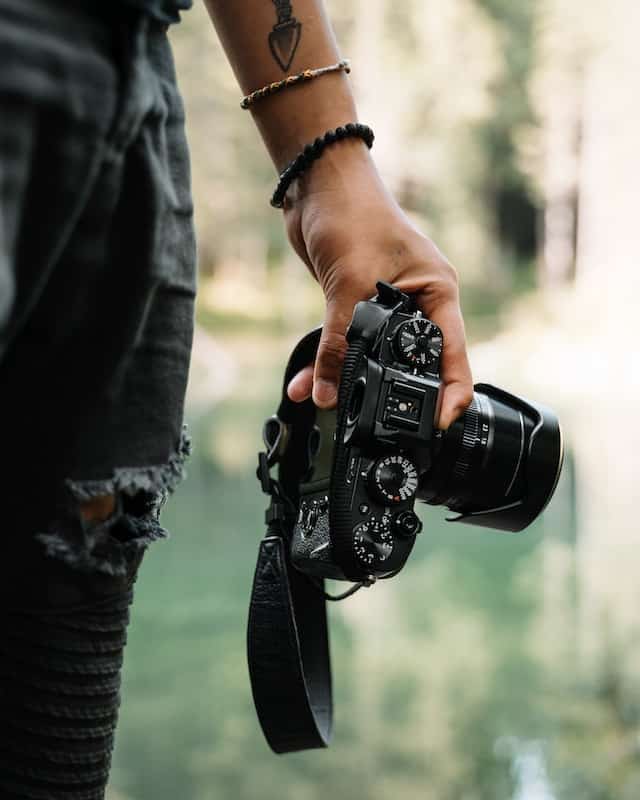Have you ever considered how the design of your camera can impact the way you approach photography? Every aspect of a camera’s design, from the placement of buttons and dials to the shape and size of the camera body, varies between brands for different reasons. Some are subtle, while others stand out, highlighting the unique features of a camera brand. In this blog piece, we’ll look at different aspects of a camera body and how their design and placement can influence the final product.

Ergonomics
The ergonomic design of your camera can have a significant impact on the way you compose and frame your shots. A camera’s ergonomics refers to how it is designed to fit comfortably in your hand and provide easy access to buttons and controls. A camera with good ergonomics can help you shoot for longer periods without experiencing discomfort or fatigue.
Aside from ergonomics, the size, shape, and weight of the camera body are also important. For example, a larger camera body with a prominent grip can be more comfortable to hold and provide better stability when shooting with a telephoto lens. On the other hand, a smaller camera body is easier to manoeuvre and allows for more discreet shooting in certain situations, such as wildlife photography.
Also, a bulkier camera body can be more difficult to carry around for extended periods, but it can accommodate larger sensors and batteries. In contrast, a lightweight camera is easier to carry around, but it does not provide the durability or long battery life that you need in certain situations, such as when travelling to remote environments for photography assignments.
Design Aesthetics
While the technical specifications of a camera are important, design aesthetics can also play an important role in your creative vision. The overall look and feel of your camera can impact the way you approach your subjects and the types of shots you take. Some cameras have a more traditional, classic look, such as Fujifilm mirrorless cameras, while others have a more modern, sleek design, like the Sony Alpha series. LCE can help you find the perfect camera for your creative vision.
Consider how the design aesthetics of your camera can impact your shooting style and the types of shots you want to capture. Whether you prefer a classic or modern look, choosing a camera that matches your personal style can help you feel more connected to your equipment and potentially enhance your creativity level.
Viewfinder
The location, size, and type of the viewfinder can also play a role in how you frame your shots and, ultimately, composition. Some digital cameras have viewfinders that are located in the centre of the body, while others have viewfinders off to the side or at the top. The size of the viewfinder can also vary, with some being larger and providing a clearer view of the scene, while others are small and electronic, showing the image captured by the camera lens. Depending on your shooting style, you might find one type of viewfinder more comfortable or effective than the other.
For example, if you’re into outdoor or portrait photography, a large and bright viewfinder is more helpful for seeing your subject clearly. Also, some photographers prefer an optical viewfinder for its natural view of the scene, whereas others prefer an electronic viewfinder, which can provide additional information and overlays that are useful when composing your shots.
Controls and Customisation
The ability to adjust settings quickly and easily can be a very important factor in experimenting with your creative vision and capturing the shots you want. This is why it can be helpful to consider the types of manual controls and customisation options available when looking for a new digital camera.
Some digital cameras have a more comprehensive range of manual controls and features than others—this is especially useful for professionals who prefer to fine-tune their settings for each shot. Also, many camera brands give you more freedom to customise the function of buttons and dials, which can be particularly useful for quickly adjusting settings without having to take your eyes off the viewfinder.
All in all, understanding how camera design influences your photography can help you choose the right camera equipment that is best suited to your needs while unlocking new levels of creative freedom. Therefore, it can be useful to consider the size and shape of the camera body, the location and size of the viewfinder, as well as the types of manual controls and customisation options available, when choosing a digital camera that is right for your style.





Leave a Reply